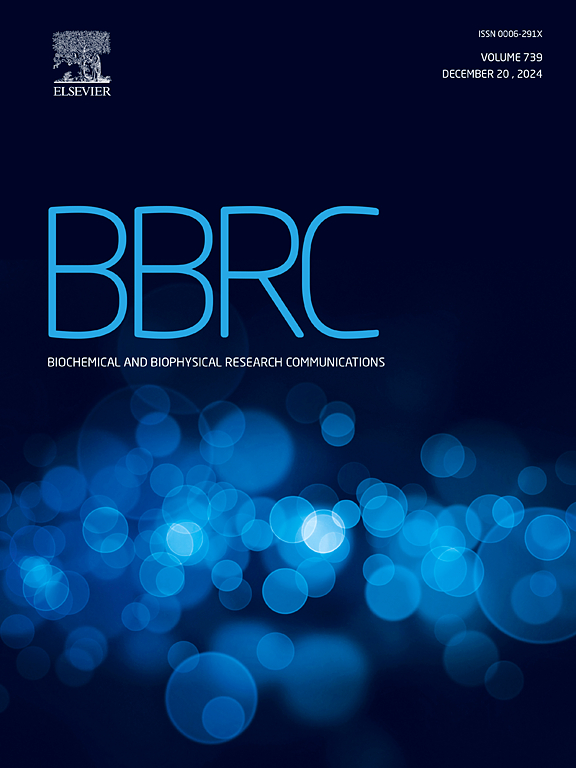荧光假单胞菌N3反式-羟基苄基乙酰丙酮酸水合酶醛缩酶缩合反应的结构快照。
IF 2.5
3区 生物学
Q3 BIOCHEMISTRY & MOLECULAR BIOLOGY
Biochemical and biophysical research communications
Pub Date : 2025-02-02
DOI:10.1016/j.bbrc.2024.151281
引用次数: 0
摘要
醛缩酶是在各种代谢产物的合成代谢和分解代谢途径中催化碳-碳键形成的关键酶。荧光假单胞菌N3可以利用由nahE基因编码的反式-邻羟基苄基乙酰丙酮酸(tHBP)水合酶-醛缩酶(HA)等酶,将萘作为其唯一的碳和能量来源。在这项研究中,我们展示了三种不同功能状态下tHBP-HA的晶体结构:载脂蛋白酶在活性位点上有一个磷酸离子,希夫碱加合物与丙酮酸结合或与‘(R)-4-羟基-4-(2-羟基苯基)-2-氧丁酸’(中间状态)结合。我们的结构阐明了醛醇缩合反应的一些阶段,提出了一个保守的水分子(W2)在催化赖氨酸的去质子化中的作用。此外,我们的晶体学数据表明了底物和产物扩散到蛋白质活性位点和从活性位点扩散的潜在途径。这些见解促进了我们对醛缩酶功能的分子机制的理解,也可用于设计和优化用于化学合成不同C-C加合物的新酶。本文章由计算机程序翻译,如有差异,请以英文原文为准。
Structural snapshots of the aldol condensation reaction of the enzyme trans-o-hydroxybenzylidenepyruvate hydratase-aldolase from Pseudomonas fluorescens N3
Aldolases are crucial enzymes that catalyze the formation of carbon-carbon bonds in the context of the anabolic and catabolic pathways of various metabolites.
The bacterium Pseudomonas fluorescens N3 can use naphthalene as its sole carbon and energy source by using, among other enzymes, the trans-o-hydroxybenzylidenepyruvate (tHBP) hydratase-aldolase (HA), encoded by the nahE gene.
In this study, we present the crystallographic structures of tHBP-HA in three different functional states: the apo enzyme with a phosphate ion in the active site, and the Schiff base adduct bound either to pyruvate or to the substitute with '(R)-4-hydroxy-4-(2-hydroxyphenyl)-2-oxobutanoate'(intermediate state). Our structures elucidate some of the phases of the aldol condensation reaction, proposing the role of a conserved water molecule (W2) in the deprotonation of the catalytic lysine. Moreover, our crystallographic data suggest potential pathways for substrate and product diffusion to and from the protein's active site. These insights advance our understanding of the molecular mechanisms of the aldolase function and can also be used for the design and optimization of new enzymes engineered for the chemical synthesis of different C–C adducts.
求助全文
通过发布文献求助,成功后即可免费获取论文全文。
去求助
来源期刊
CiteScore
6.10
自引率
0.00%
发文量
1400
审稿时长
14 days
期刊介绍:
Biochemical and Biophysical Research Communications is the premier international journal devoted to the very rapid dissemination of timely and significant experimental results in diverse fields of biological research. The development of the "Breakthroughs and Views" section brings the minireview format to the journal, and issues often contain collections of special interest manuscripts. BBRC is published weekly (52 issues/year).Research Areas now include: Biochemistry; biophysics; cell biology; developmental biology; immunology
; molecular biology; neurobiology; plant biology and proteomics

 求助内容:
求助内容: 应助结果提醒方式:
应助结果提醒方式:


